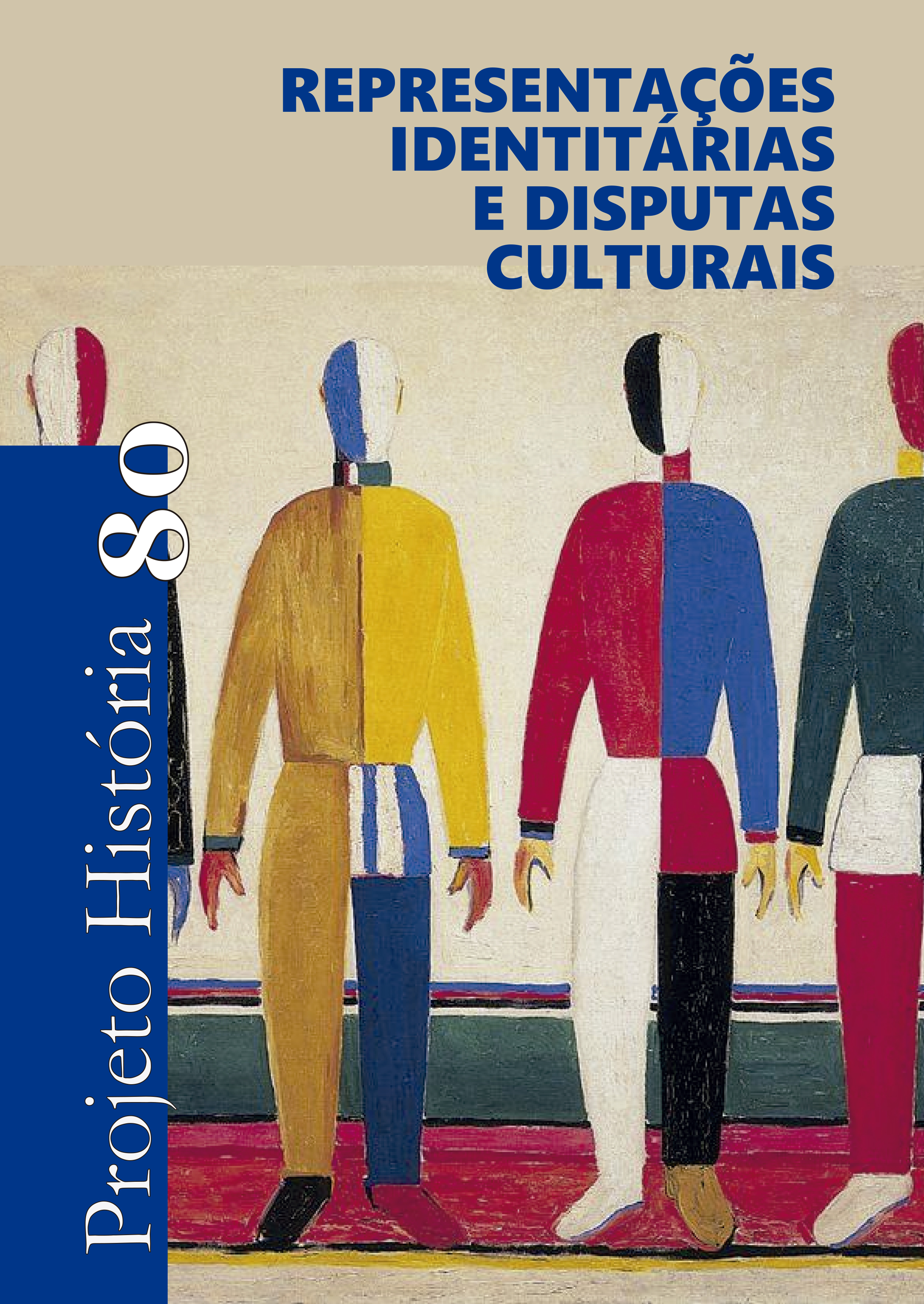Phoenicians in the Aegean
DOI:
https://doi.org/10.23925/2176-2767.2024v80p219-244Keywords:
Phoenicia, Expansion, AegeanAbstract
Much has already been researched and written about the Phoenician expansion to the Central and Western Mediterranean, but the first steps and moments of this important process is still little explored. It is important because it led to important cultural interactions in the history of the peoples of the entire Mediterranean region, and resulted in seminal products, to mention just two, the development of writing from the systematization of the Phoenician alphabet, and the socio-spatial organization of cities. In this article, we address the most recent research on the Phoenician presence in 'Greek' lands, in the Aegean region, together with Cyprus, Phoenicians first step outside their homeland.
References
Fontes textuais
Heródoto. História. Trad. Brito Broca. Rio de Janeiro: Nova Fronteira, 2019.
Homero. Odisseia. Trad. Jaime Bruna. São Paulo: Cultrix, 1976.
Obras
ACQUARO, E. Cartagine: un impero sul Mediterraneo. Roma: Club del Libro Fratelli Melita, 1987 [2ª Ed.].
ANTONIADIS, V. Early Iron Age Cemeteries at Knossos: The Appreciation of Oriental Imports and their Imitations by Knossian Society. Tese de doutorado. Departament d’Humanitats, Institut Universitari d’Historia Jaume Vicens i Vives, Universitat Pompeu Fabra, Madrid, 2012.
AUBET, M. E. The Phoenicians and the West. Politics, Colonies and Trade. Cambridge: Cambridge University Press, 1997 (1ª Ed. 1987).
BONDÌ, S. F. Le commerce, les échanges, l’économie. In: KRINGS, V. (Ed.). La civilisation phénicienne et punique. Manuel de recherche. Handbook of Oriental Studies, Zwanzigster Band. Köln: E. J. Brill, 1995. pp. 268-281.
BUNNENS, G. L'expansion phenicienne en Mediterranee. Essai 'interpretation fondée sur une analyse des traditions litteraires'. Roma / Bruxelas: Institut Historique Belge de Rome, Études de Philologie, D 'Archéologie et d'Histoire Anciennes, v. 17, 1979.
BOTTO, M.; OGGIANO, I. L’Artigiano. In: ZÁMORA, J. (Ed.). El hombre fenicio: estudios y materiales. Consejo Superior de Investigaciones Cientificas, 2003, pp.1-19.
CELESTINO, S.; RAFEL, N.; ARMADA, X.-L. Contacto cultural entre el Mediterraneo y el Atlantico (siglos XII-VIII ane) - la precolonización a debate. Escuela Española de Historia y Arqueología en Roma, Serie Arqueológica 11. Madrid: Consejo Superior de Investigaciones Científicas, 2008.
CRAWLEY QUINN, J. In Search of the Phoenicians. Princeton: Princeton University Press, 2018.
GRAS, M; ROUILLARD, P.; TEIXIDOR, J. L’univers phénicien. Paris: Artaud, 1988.
HALL, J. Ethnic Identity in Greek Antiquity. Cambridge: Cambridge University Press, 1997.
HALL, J. Hellenicity, between Ethnicity and Culture. Chicago: University of Chicago Press, 2002.
HODOS, T. The Archaeology of the Mediterranean Iron Age. A Globalising World c. 1100-600 BCE. Cambridge: Cambridge University Press, 2020.
KORMIKIARI, M. C. N. Expansão marítima e influência cultural fenícia no Mediterrâneo centro ocidental. Clássica, Anais da VII Reunião Anual da SBEC, 1993, pp. 261-267.
KORMIKIARI, M. C. N. O comércio, as trocas e o sistema do dom entre os fenícios. In: Alexandre Galvão Carvalho. (Org.). Interação social, reciprocidade e profetismo no Mundo Antigo. Vitória da Conquista: Edições UESB, 2004, pp. 127-154.
KORMIKIARI, M. C. N. Quem eram os fenícios? Ou da crise identitária na Academia do século XXI. Hélade, vol. 5, n.2, 2019, pp. 13-34.
KILLEBREW, A. E. Canaanite roots, proto-Phoenicia, and the early Phoenician Period. Ca. 1300-1000 BCE. In: LÓPEZ-RUIZ, C. et al. (Eds.). The Oxford Handbook of the Phoenician and Punic Mediterranean. Oxford: Oxford University Press, 2019, pp. 39-55.
KOUROU, N. Phoenician Presence in Early Iron Age Crete Reconsidered. Actas del IV Congreso International de Estudios Fenicios y Púnicos. Cádiz, 2 a 6 de outubro, 1995. Cádiz: Servicios de Publicaciones Universidad de Cádiz, 2000, pp. 1067-1081.
KOUROU, N. The evidence from the Aegean. In: Sagona, C. (Ed.). Beyond the Homeland: Markers in Phoenician Chronology. Leuven, Paris, Dudley, MA: Peeters, 2008, pp. 305-364.
KRINGS, V. (Ed.). La civilisation phénicienne et punique: manuel de recherche. Handbook of Oriental Studies. Section 1 The Near and Middle East, Vol. 20. Brill Academic Publishers, 1994.
LÓPEZ-RUIZ, C. e DOAK, B. R. (Eds.) The Oxford Handbook of the Phoenician and Punic Mediterranean. Oxford University Press, 2019.
MATTINGLY, D. J. e HITCHNER, B. Roman Africa: an Archaeological Review. The Journal of Roman Studies, n. 85, 1995, pp. 165-213.
MAUSS, M. Sociologia e Antropologia. São Paulo: E.P.U.; Edusp, 2 vols., 1974 (1ª Ed. 1925).
MAZZA, F. La 'precolonizzazione' fenicia: problemi storici e questioni metodologiche. In: ACQUARO E. et al. (Orgs.). Momenti precoloniale nel Mediterraneo Antico. Atti del Convegno Internazionale, Roma, 1985. Roma: Consiglio Nazionale delle Ricerche, 1988, pp.191-203.
MOSCATI, S. Problematica della Civiltà Fenicia. Studi Semitici, vol. 46. Roma, 1974.
NIGRO, L. The temple of Astarte ‘Aglaia' at Motya and its Cultural Significance in the Mediterranean Realm. In: BLAKELY, S. et al. (Orgs.). Religious Convergence in the Ancient Mediterranean. Studies in Ancient Mediterranean Religions. Lockwood Press, 2019, pp.101-125.
POPHAM, M. An engraved Near Eastern Bronze bowl from Lefkandi. Oxford Journal of Archaeology, vol. 14, n. 1, 1995, pp. 103-107.
SHARON, I. et al. An Archaeological Contribution to the Early Iron Age Chronological Debate: Alternative Chronologies for Phoenicia and Their Effects on the Levant, Cyprus and Greece. Bulletin of the American Schools of Oriental Research, n. 332, 2003, pp. 7-80.
SLIM, H.; MAHJOUBI, A.; BELKHOJA, K.; ENNABLI, A. L’Antiquité. Histoire Général de la Tunisie. Túnis: Sud Éditions, 2010.
STAMPOLIDIS, N. The Aegean. In: LÓPEZ-RUIZ, C. et al. (Orgs.). The Oxford Handbook of the Phoenician and Punic Mediterranean. Oxford: Oxford University Press, 2019, pp.493-503.
Downloads
Published
How to Cite
Issue
Section
License
Copyright (c) 2024 Projeto História : Revista do Programa de Estudos Pós-Graduados de História

This work is licensed under a Creative Commons Attribution 4.0 International License.

Este obra está licenciado com uma Licença Creative Commons Atribuição 4.0 Internacional.




